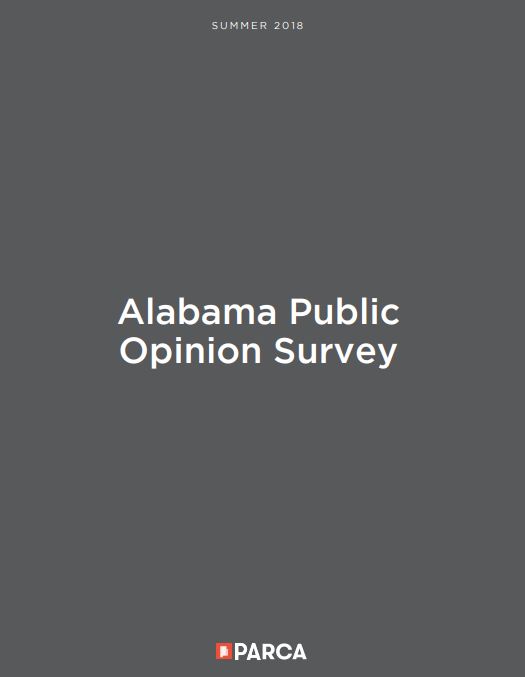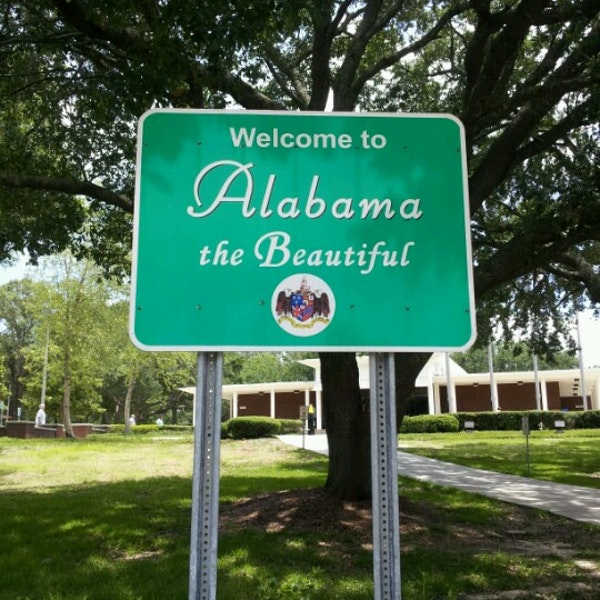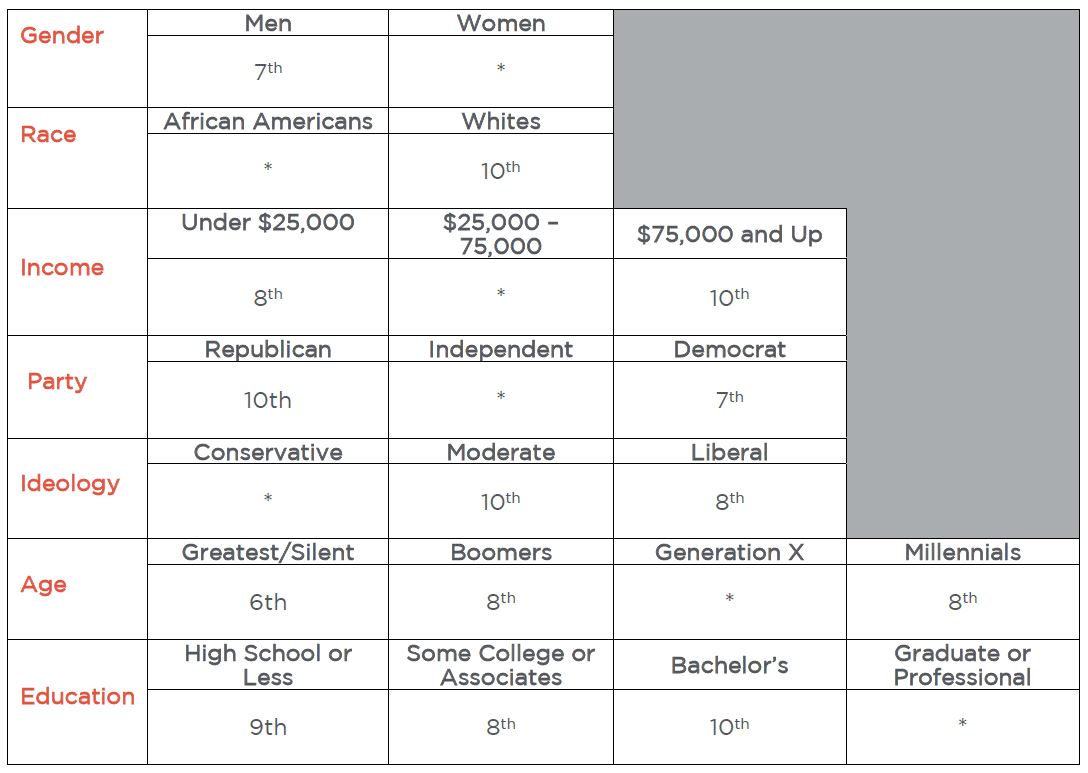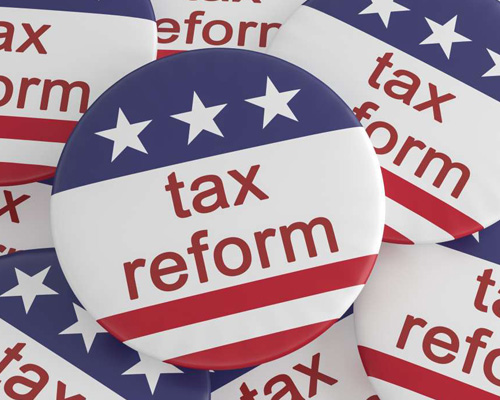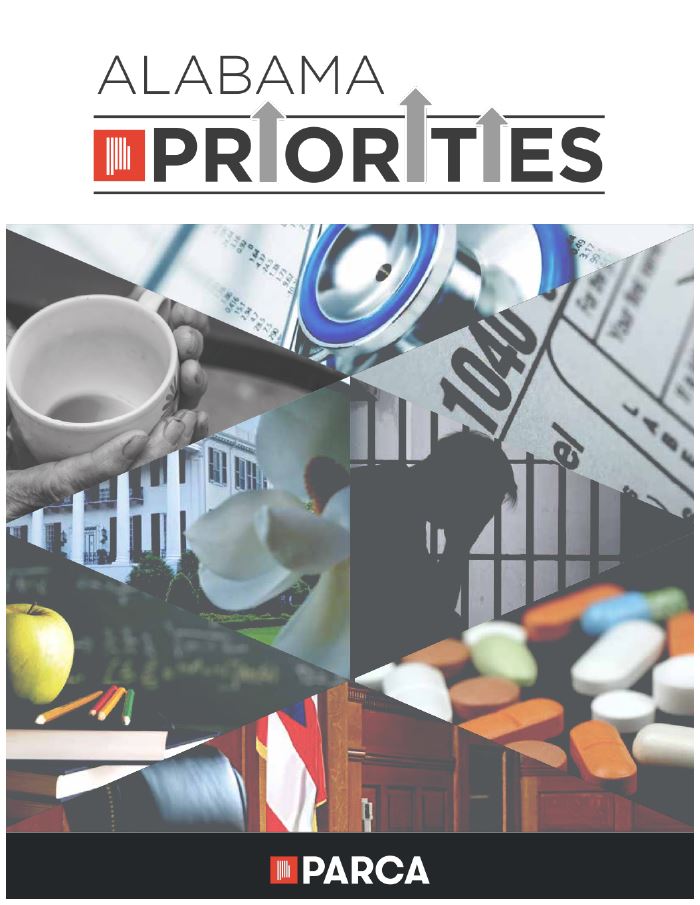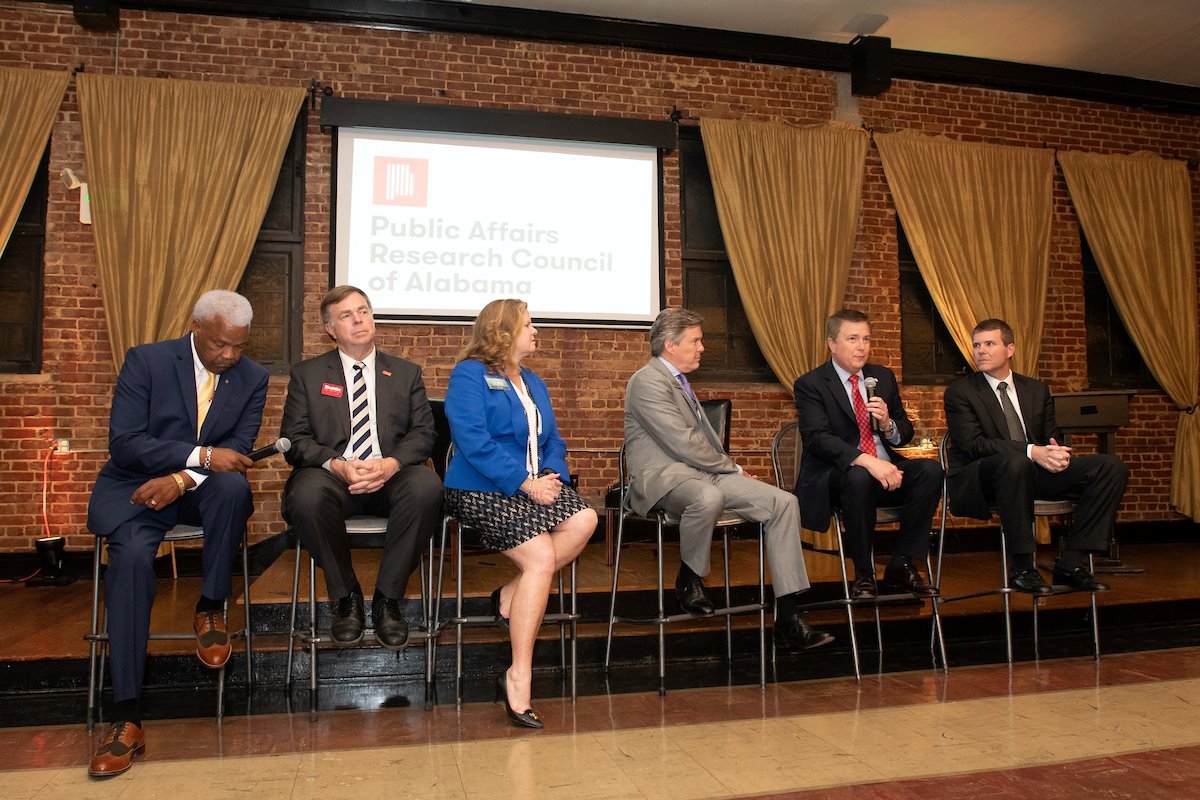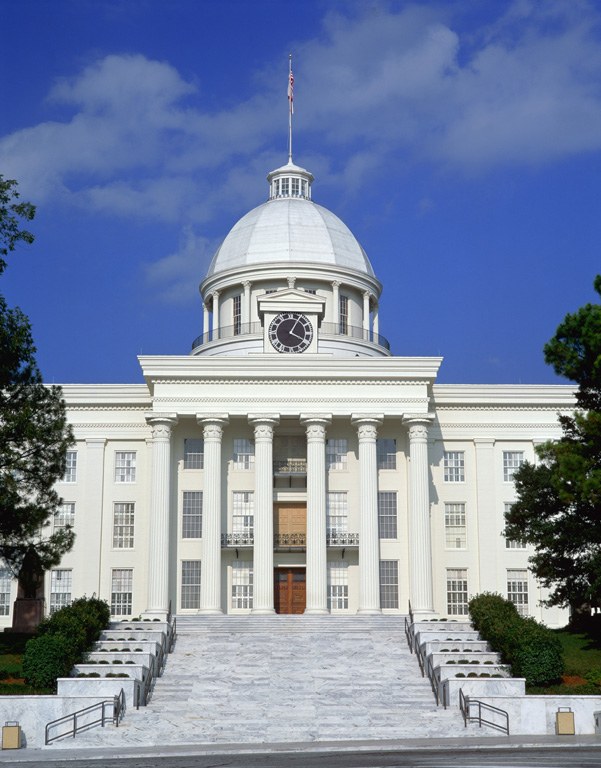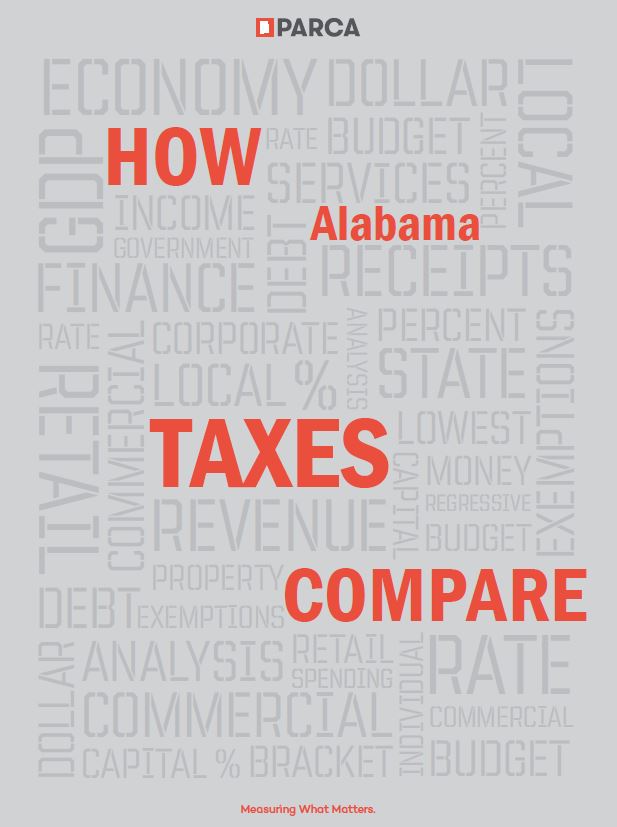
In late 2017, the Public Affairs Research Council of Alabama (PARCA) surveyed Alabama voters to determine their thoughts about the general direction of the state and the issues that most concern them. PARCA partnered with Samford University to survey policy professionals from across the state including academics, journalists, business and nonprofit leaders, and lobbyists. Their responses provided a list of 17 critical issues facing Alabama. PARCA partnered with USA Polling at the University of South Alabama to ask registered voters about these 17 issues. The voters’ responses generated the Top Ten list of voter priorities. Details about the survey and its methodology can be found in the full Alabama Priorities report.
Alabama Priorities
| 1. K-12 Education |
| 2. Healthcare |
| 3. Government Corruption and Ethics |
| 4. Mental Health and Substance Abuse |
| 5. Poverty and Homelessness |
| 6. Jobs and the Economy |
| 7. Crime and Public Safety |
| 8. Job Training and Workforce Development |
| 9. Improving the State's Image |
| 10. Tax Reform |
Key Findings
• Voters broadly agree on the critical issues facing the state.
• Voters are not polarized along traditional political, ideological, racial, or generational lines. There is a significant gap between the priorities of experts and the priorities of voters.
• Policymakers have an opportunity to inform and educate voters on critical and systemic challenges facing the state.
• Policymakers have an opportunity to respond to immediate, often highly personal issues that concern voters.
• Elected officials and candidates have an opportunity to show leadership and to build broad coalitions to address Alabama’s most pressing challenges.
In the following months, PARCA will produce summary briefs on each of the top ten priorities chosen by Alabama voters. Each brief will answer four critical questions: what is the issue, why it matters, how Alabama compares, and what options are available to Alabama policymakers.
#7: Crime and Public Safety
What is the Issue?
Alabama voters ranked crime and public safety as the 7th most important issue among the priorities, with approximately 58% of voters indicating they were very concerned about the issue. The issue averaged 4.10 on a 1 – 5 scale where 1 is “not at all concerned” and 5 is “very concerned.”
Majorities of every racial group are very concerned about this issue. Approximately three-quarters of African-Americans say they are very concerned. Respondents with lower incomes are more likely to say they are very concerned than respondents with higher incomes. While majorities of conservatives and liberals say they are very concerned, only a plurality (more than any other category but not a majority) of self-described moderates holds this view.
Survey respondents were also asked about their top policy responses to crime and public safety. Twenty-seven percent of voters were more concerned about the number of police, 24% civil liberties, and lesser percentages identifying sentencing reform and conditions of state prisons as their top priority.
Why Is Crime and Public Safety Important?
In previous generations, a basic high school education was sufficient for entry into the workforce. Today, an increasing share of entry-level jobs require a level of training beyond a high school diploma. To generate a prepared workforce, there is continued need to improve preparation for and access to two and four-year colleges. However, the demand for advanced training is also being addressed by K-12 schools, where students are increasingly presented with options for earning industry-recognized credentials while still in high school. Certificate programs are being expanded for new graduates and current workers.
Alabama has enjoyed an unprecedented run of industrial recruitment and new job creation. According to the Alabama Department of Commerce, the state has added or announced 138,197 new jobs between 2010 and 2017. In that same time, employment in Alabama has grown from 1,893,169 to 2,081,176 – an increase of 188,007, and the unemployment rate has fallen to 3.8% (December 2017). Recent monthly unemployment rates for the state have hovered between 3.7 and 4.1%, the lowest numbers since at least 1976. Despite the surging demand for labor, Alabama’s population growth has been sluggish, creating a tight labor market and a pending shortage of workers.
How Does Alabama Compare?
Crime has many negative impacts on a community.
Crime and the response to crime create a large economic and social cost, including the direct economic losses suffered by victims and the costs of police protection, legal services, and corrections.
Crime data and perceptions of public safety are widely used in quality of life rankings, which can impact the perceived livability and desirability of a community.[1]
High crime rates deter business. Crime can reduce the size and skills of the labor force. Crime can have a negative impact on education and training, diminishing the long-term creativity and innovative capacity of a community. Crime can deter business investment and location.
The economic, societal, familial, and personal costs of incarceration are immense.
Public safety plays a crucial role in supporting economic growth and vitality by reducing the cost of crime and enhancing the desirability of communities as places to live and locate businesses and has a direct impact on the levels of societal trust and interaction.[2]
How Does Alabama Compare?
The Crime Rate
Alabama reported 532.3[3] violent crimes per 100,000 residents in 2016, placing Alabama 8th highest in the nation for violent crimes. Alabama fared worse than most Southeastern states, except Tennessee, Louisiana and Arkansas. The state fared somewhat better in terms of property crimes, ranking 14th in the nation. Alabama’s property crime index for 2016 was 2,947.8 per 100,000 residents but was lower than that of only four Southeastern states. When violent and property crimes are considered together, Alabama ranked 9th in the nation with a crime index of 3,480.1 per 100,000 residents.
According to the Alabama Law Enforcement Agency’s annual crime report[4], total crime in the state has decreased from 2011 to 2015 but increased roughly 2% from 2015 to 2016.
However, during this same period, the number of violent crimes increased every year except between 2012 and 2014. Violent crime in the state increased from 405.5 per 100,000 residents in 2014 to 518.2 in 2016.
Although the number of violent crimes increased significantly over that two-year period, the number of crimes cleared has been decreasing.[5] In 2014, 45% of violent crimes were cleared, but that percentage decreased to 39% in 2016. The clearance rate for total crime in the state has also been declining over the same period.
The Incarceration Rate
In 2016, there were 27,799 inmates in Alabama prisons, a rate of 633 people per 100,000 – the 3rd highest incarceration rate in the U.S. The state’s incarceration rate is significantly higher than the national rate of 471 per 100,000 residents and lower than only Oklahoma and Louisiana; 700 and 816 per 100,000 residents, respectively.
The high number of incarcerations makes the state’s prisons the most overcrowded in the country; housing almost twice the number of inmates the facilities were designed to house.
In addition to a high incarceration rate, the ratio of supervising probation and parole officers to probationers, parolees, and offenders poses a significant problem for the state’s system. At the end of fiscal year 2017, the total caseload average per officer on any given day was measured at 169 to 1. When broken down by total and active caseloads, the active caseload average per officer was 110 to 1. The American Probation and Parole Association (APPA) recommended caseload is 20 probationers per probation officer for intensive supervision, 50 to 1 for moderate to high-risk offenders, and 200 to 1 for low-risk offenders.
The Recidivism Rate
Recidivism, which refers to a person’s relapse into criminal behavior and is measured by criminal acts that result in rearrests, reconviction, or return to prison within three years, is a major driver of incarceration rates.
In 2017, the recidivism rate in Alabama was 31.5%, including all cohorts.[6] The high percent of recidivists continues to negatively impact the state’s prison system which is already overburdened. It also sheds light on the need for more effective programs to help released prisoners readjust to their communities and rebuild their lives.
Juvenile Detention
The percentage of violent crimes and property crimes committed by juveniles in Alabama decreased since 2013. As of 2016, juveniles account for 6% of violent crimes and property crimes.
Despite the decline in juvenile crime, the number of detained juveniles is also a cause for concern. Alabama’s juvenile custody rate of 184 per 100,000 youths places the state 20th in the nation. When compared to Southeastern states, the state ranked 3rd with only Arkansas and Virginia having higher rates.
There is a long-term impact on juveniles with criminal convictions that goes beyond the immediate effect to individual and family. A study from University of Pittsburgh found that 52% to 57% of juvenile delinquents continue to offend up to the age of 25, and about 16 – 19% up to the age of 30.[7]
Funding
Like many parts of state government, Alabama’s corrections and justice systems struggle with funding. Alabama spends less on corrections than a majority of states across the country.
According to the Alabama Department of Corrections 2017 Annual Report, Alabama spent $52.07 per day per inmate, compared to the national average of $99.45.
Alabama’s low per inmate spending may be seen as a positive by some. However, it is important to remember that with this level of spending comes a Department of Corrections that is understaffed, pays the lowest of any public safety agency in the state, and which suffers from very high turnover rates. The state’s corrections spending also contributes to legal issues facing the state. Alabama is currently engaged in two different lawsuits concerning the healthcare and conditions of Alabama’s prisons. It is highly likely that the outcome of these cases will result in court-mandated increases in Alabama’s corrections budget.
Beyond funding Alabama’s prison system, Alabama’s funding for judicial, legal and police protection is also low. Based on 2016 expenditure data from the Bureau of Justice Statistics, Alabama’s justice system expenditures, which include police protection, judicial and legal, and corrections, were low when compared to more than 30 states across the country and most Southeastern states. In 2016, the state spent $2.5 billion, while other southeastern states spent a significantly higher amount (example Florida’s 2016 expenditures totaled roughly $14 billion and Georgia approximately $6 billion).
What Can We Do?
The state has made recent attempts to address overcrowding in prisons, the high rate of supervision caseloads, and the lack of treatment in the community. In 2015, the state passed the Justice Reinvestment Act (Act 2015-185), which strengthened community-based supervision as an alternative to prison, while prioritizing prison space for violent and dangerous offenders. The legislation also took steps to ensure supervision for everyone upon release from prison. Since then, the state’s prison population has decreased by 15%, and more than 100 new probation and parole officers have been hired to help reduce officers’ caseloads.
In June 2018, the Alabama Department of Corrections announced pay raises of 5% for correctional officers at medium security facilities and 10% for officers at maximum security facilities.
Further reductions of the inmate population will be challenging, and additional investment in the prison system will be fiscally and politically difficult – although court orders may leave the state with no choice.
There are additional options the state can explore, including:
- Continued expansion of day reporting facilities[8] and related programs designed to reduce recidivism;
- Explore recommendations of the Alabama Juvenile Justice Task Force[9] designed to reform the retention of juvenile offenders; and
- Expand mental health and drug treatment options both inside state prisons and in local communities.
Drafted by Kenesha Reynolds-Allie, Ph.D. and the Staff of the Public Affairs Research Council of Alabama
View the full PDF report here.
[1] Blair, J.P., “Quality of life and economic development policy”, Economic Development Review 16, 1998.
[2] Keeling, Mary and Mark Cleverly, “Accelerating economic growth and vitality through smarter public safety management”, IBM Institute for Business Value, Executive Report.
[3] Crime index (violent and property crimes) was calculated using 2016 Crime in the United States (CIUS) data from the Federal Bureau of Investigation (FBI) Uniform Crime Reporting (https://ucr.fbi.gov/crime-in-the-u.s) and 2016 population estimates from the U.S. Census Bureau, Population Division (https://www.factfinder.census.gov)
[4] http://www.alea.gov/Home/wfContent.aspx?PLH1=plhACJIC-CrimeInAlabama
[5] A clearance is a measure of law enforcement activity whereby enough evidence is found to charge a suspect and take him into custody (an arrest) or when a crime is solved but no formal charges are brought against a suspect (clearance by exceptional means).
[6] Alabama Department of Corrections – FY2017 Annual Report (http://www.doc.state.al.us/StatReports)
[7] Stouthamer-Loeber, Magda, “Persistence and Desistance in Offending” (unpolished report, Pittsburg, Pa.: Life History Research Program, University of Pittsburg, 2010).
[8] Board of Pardons and Paroles, 2017 Annual Report http://www.pardons.state.al.us/Reports.aspx
[9] Alabama Juvenile Justice Task Force Final Report, December 2017. http://dys.alabama.gov/images/task_force/AL%20JJ%20Task%20Force%20Report_FINAL.pdf
